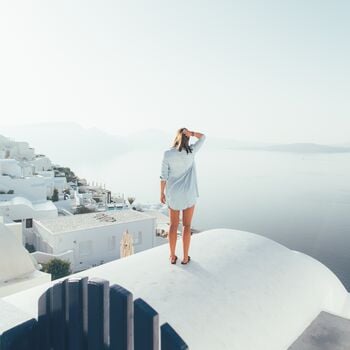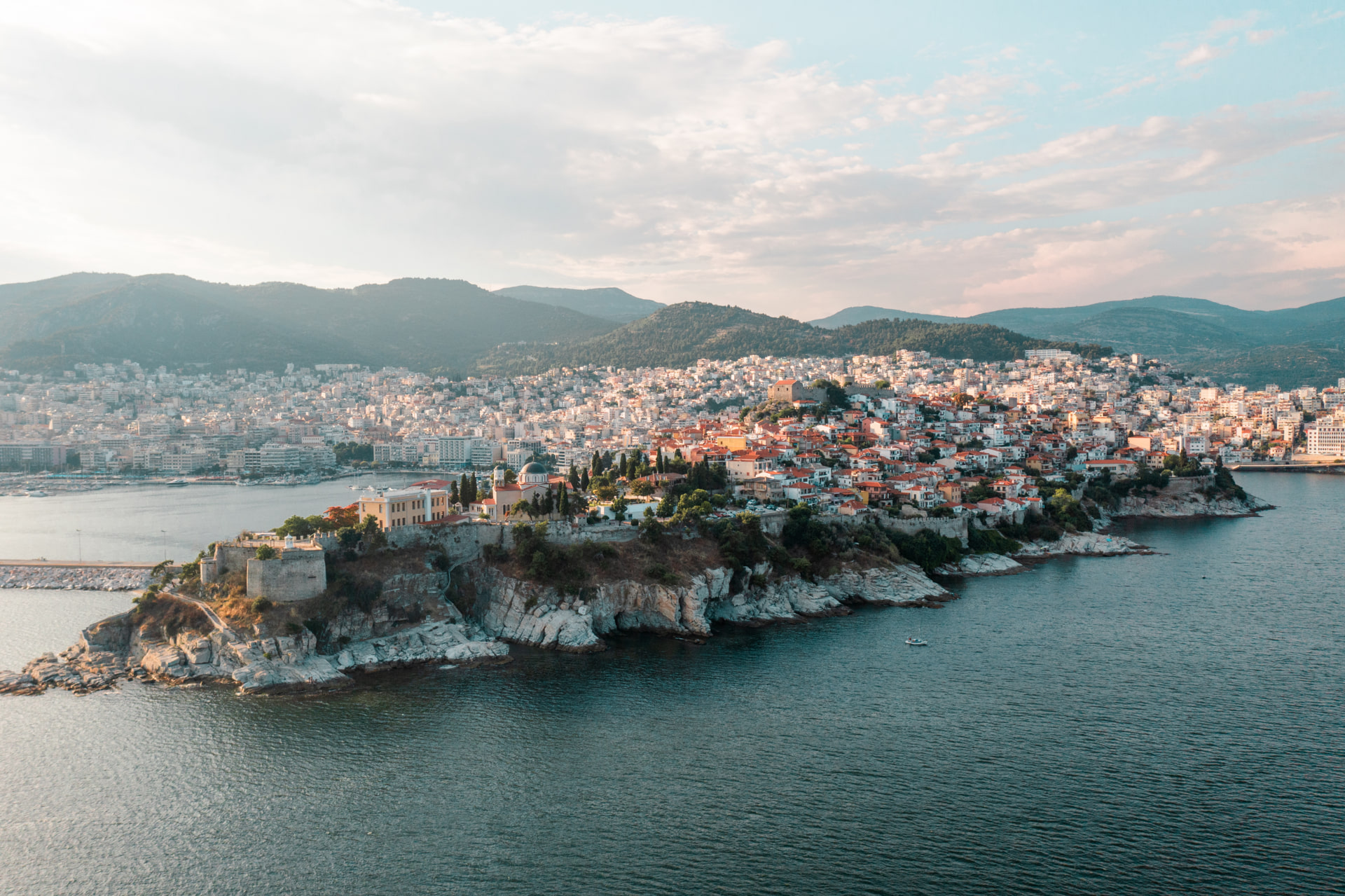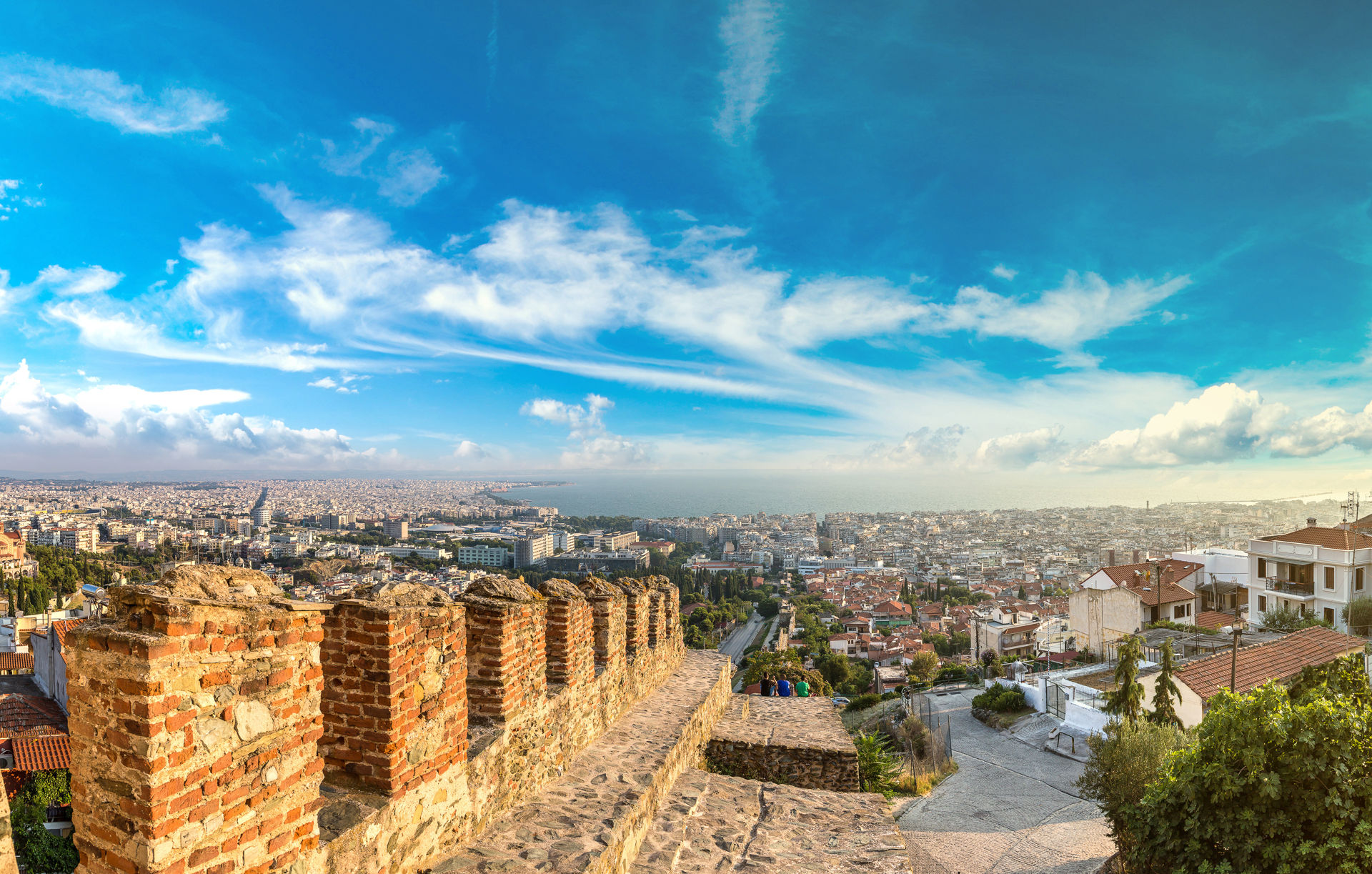Highlights
Delve into the fascinating world of Kavala with a free self-guided audio tour (mobile-friendly) that includes landmarks like the Old Town Fortress, the Kamares Aqueduct, the Ottoman-era Imaret and mosques, and the tobacco warehouses that brought prosperity in the 19th and 20th centuries. Designed to be enjoyed in full or in part, this tour uncovers the secrets of a city influenced by many cultures.
- Total distance: 5km
- Estimated walking time (including audio): 2.5 hours
- Number of stops: 17
- Also available in Greek
Created by Discover Greece Team
Sponsored by the Tourism Partnership of Kavala & Thassos
Descripción
Free audio walking tour of Kavala
From its prehistoric beginnings and the legacy of the ancient Greeks and Romans to the influences of the Byzantines, Ottomans, Jews and many other cultures, Kavala is one of the most fascinating cities in Greece.
This free audio tour of Kavala guides you around the city’s many landmarks, including the Kamares Aqueduct, the Archaeological Museum, churches and monasteries, and Ottoman-era monuments such as the Imaret and the Halil Bey Mosque.
You pass by the museum and the warehouses that bear witness to the all-important tobacco trade of the 19th and 20th centuries and retrace the steps of the Greek refugees from Asia Minor, who changed the character of the city when they arrived in the early 20th century.
On a walk that takes you from the Fortress-topped Panagia peninsula and cobblestones of Kavala Old Town to the cultural landmarks of the modern city, you enjoy stops that allow you to appreciate the aromas and tastes of this colourful city in northern Greece.
Audio tour highlights of Kavala
- Tobacco Museum & Warehouses
- Archaeological Museum
- Architectural gems on Kyprou street
- Halil Bey Mosque
- The Imaret
- The Fortress
- The Rocks of Panagia
- The Old Aqueduct (Kamares)
- Museum of Greek Refugees
* Note that entry to museums is not included
Kavala through the centuries
- 7th Century BC: Founded as Neapolis, a colony of Thassos
- 356 BC: Philip II of Macedon founds Philippi, near Kavala. Neapolis joins the kingdom of the Macedonians in around 350 BC.
- 42 BC: The Battle of Philippi involves the forces of Antony and Octavian against Brutus and Cassius, influencing Kavala’s prominence in the Roman world
- 49 AD: The Apostle Paul lands at Neapolis on his way to Philippi, an important moment for the spread of Christianity in Europe
- 2nd-4th centuries AD: Neapolis thrives as a Roman port and a stop on the Via Egnatia military and trade route
- 9th-10th centuries AD: Renamed Christoupolis during Byzantine period, becoming significant trade and religious centre
- 1387: Becomes part of Ottoman empire and, in time, is renamed Kavala
- 18th-19th centuries: Flourishes due to tobacco production and trade, attracting merchants and artisans. Notable mansions and tobacco warehouses built
- 1769: Muhammad Ali, the founder of modern Egypt, is born in Kavala
- 1912: Incorporated into Greece during the Balkan Wars
- 1923: Population grows significantly after the population exchange with Turkey, bringing Greek refugees from Asia Minor who enriched Kavala’s culture and economy
- World War 2: Occupied by Axis powers (Bulgaria)
- Post-War era: Continues as an important trade hub in the region, before the tobacco trade is gradually replaced by other agriculture, tourism and cultural preservation
About the provider
This free audio walking tour of Kavala, including the choice and description of stops and the route, was created and road-tested by the Discover Greece Team.
Itinerary
Archaeological Museum of Kavala — 0’–17’
Quick highlights pass before heading into the tobacco-era heritage downtown.
Tobacco Museum — 17’–25’
The city’s unique tobacco story in a compact, engaging museum.
Buildings of Kyprou Street — 25’–31’
Stroll a street lined with eclectic tobacco-era façades.
Municipal Tobacco Warehouse — 31’–37’
Impressive industrial architecture from Kavala’s tobacco heyday.
Municipal Garden — 37’–43’
Green pause between city and sea; shade and benches if you need a breather.
Ananiadis Coffee Shop — 43’–51’
Short café stop to sample local sweets and recharge.
Church of Saint Nicholas — 51’–58’
Harbor-side church with maritime character and views toward the Panagia peninsula.
14 & 16 Poulidou Street — 58’–62’
Notable façades on one of Panagia’s most photogenic lanes—quick look and go.
Imaret — 62’–72’
Ottoman külliye and landmark of Kavala’s skyline (exterior appreciation unless you have entry).
Halil Bey Mosque (Palia Mousiki) — 72’–80’
Historic mosque at the heart of the peninsula; striking silhouette and color.
Residence & Museum of Mohammed Ali — 80’–92’
Elegant 18–19th c. mansion of Kavala’s most famous son; period details and views.
Church of the Dormition of the Virgin Mary — 92’–99’
Neighborhood parish church; brief interior visit if open.
Rocks of Panagia — 99’–105’
Short waterside detour for coastal views at the tip of the peninsula.
The Fortress (Akropolis) — 105’–128’
Climb to the ramparts for 360° views across the harbor, peninsula, and mountains.
Old Aqueduct (Kamares) — 128’–136’
Iconic arches bridging the lower town—excellent photo stop from multiple angles.
Museum of Greek Refugees — 136’–144’
Compact museum dedicated to 20th-century refugee stories in Kavala and beyond.
The Karnagio — 144’–150’
Traditional boatyard area; end with harbor views and maritime vibes.
Acerca del proveedor
Explore more things to do
-
Reserva con confianza
We have carefully selected the most reliable providers in Greece. -
Handpicked tours & activities
All our tours and activities have been chosen for maximum quality and reliability. -
Flexible cancellation policy
Discover Greece is in close contact with providers to ensure flexibility in the event of cancellation.



